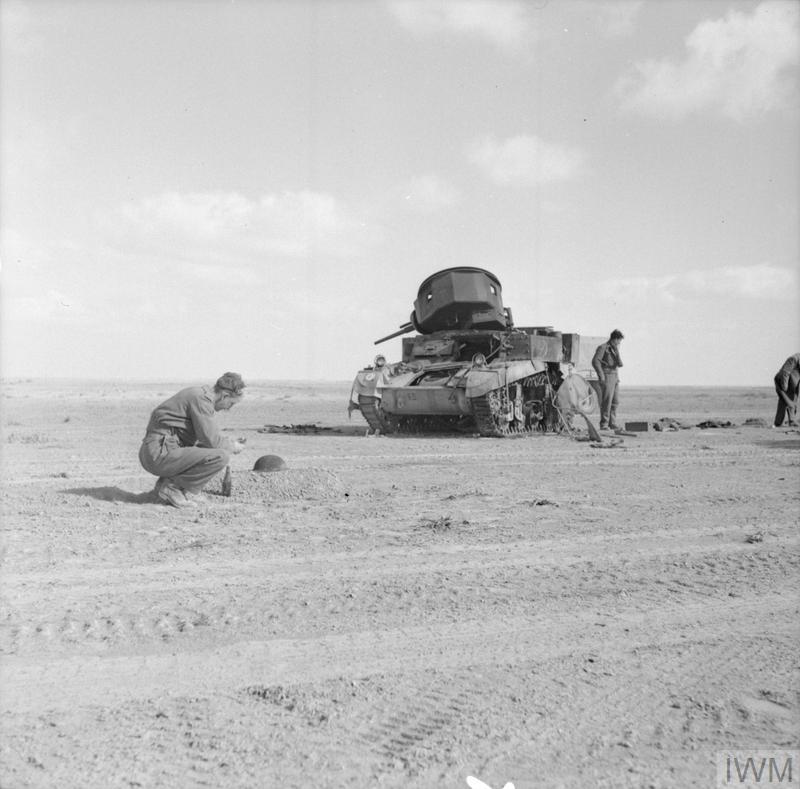Alam El Halfa
This Battle was the final attempt by Rommel to break through to the Nile Delta, and Montgomery’s first Battle as Eighth Army Commander.
The Honour is borne on the Guidon of the 4th Hussars.
The Honour has been awarded to the 8th Hussars.
Detail
The Battle of Alam Halfa was Rommel’s last offensive in Egypt, and Montgomery’s first victory after taking command of the Eighth Army, a victory that removed any chance of Rommel reaching Alexandria or the Suez Canal.
Rommel’s plan was a repeat of the start of the battle of Gazala. His infantry would make a frontal assault on the British line, to pin it in place. His mobile forces would then sweep around the exposed southern flank of the British line, advance east past the Alam Halfa ridge, and then turn north on flatter ground to reach the coast at El Hamma.
The attack began at 2300hrs on the night of 30th/31st of August. The German advance was slower than expected, and by dawn, the Afrika Korps had only advanced eight miles past the German minefields. They had already suffered heavily from Allied air attacks and had discovered the 7th Armoured Division threatening the southern flank of their planned advance east.
For the battle of Alam el Halfa, the 4th Hussars joined the similarly wounded 8th Hussars becoming The 4/8th Hussars, equipped with Stuart tanks.
At the end of August, they were told to move from the Qattara Depression to the top of the escarpment to ambush Rommel’s columns and on finding a supply column they dealt with 57 lorries.
The presence of the 7th Armoured Division forced the Germans to turn north earlier than they had planned. Having achieved its main purpose, the 7th Armoured Division withdrew rather than risk getting pinned down.
On the 1st of September, the Germans were limited to an attack on the centre of the Alam Halfa position, but this was easily repulsed. The air attacks continued all day, and on the morning of the 2nd of September Rommel decided to withdraw to the El Taqa-Bab el Qattara line, close to his starting point.
Montgomery now planned his own offensive, to be carried out by the New Zealanders on 3rd/4th September. He was clear that the armoured forces were not to leave their defensive positions to take part in this part of the battle, as he didn’t want to risk spoiling the earlier defences successes by losing large numbers of tanks in the open desert. This marked the start of two days of heavy fighting between the two lines of British mines on the southern front.
This Battle finally came to an end on the 7th of September, and a new front line was established just to the east of the original minefields.



